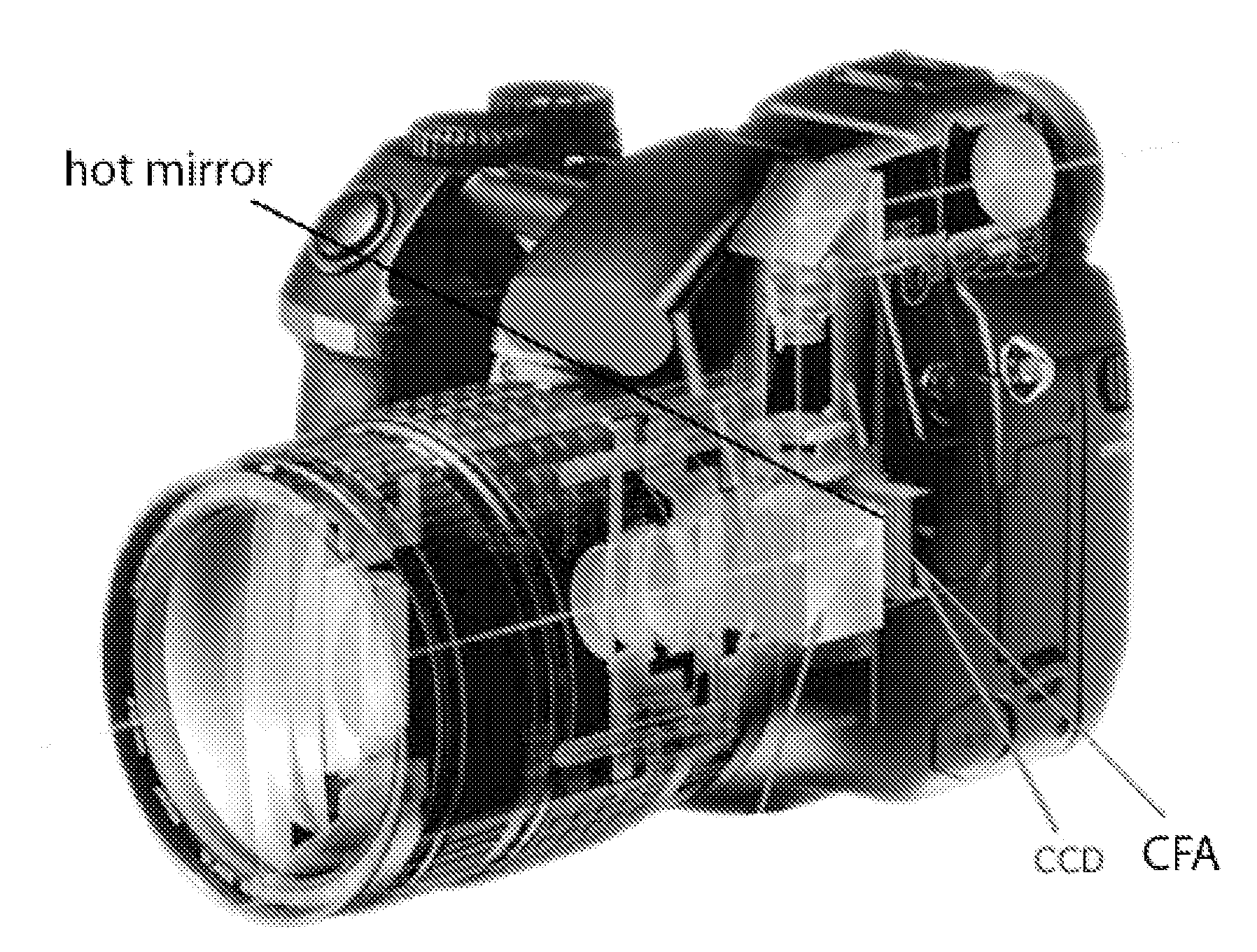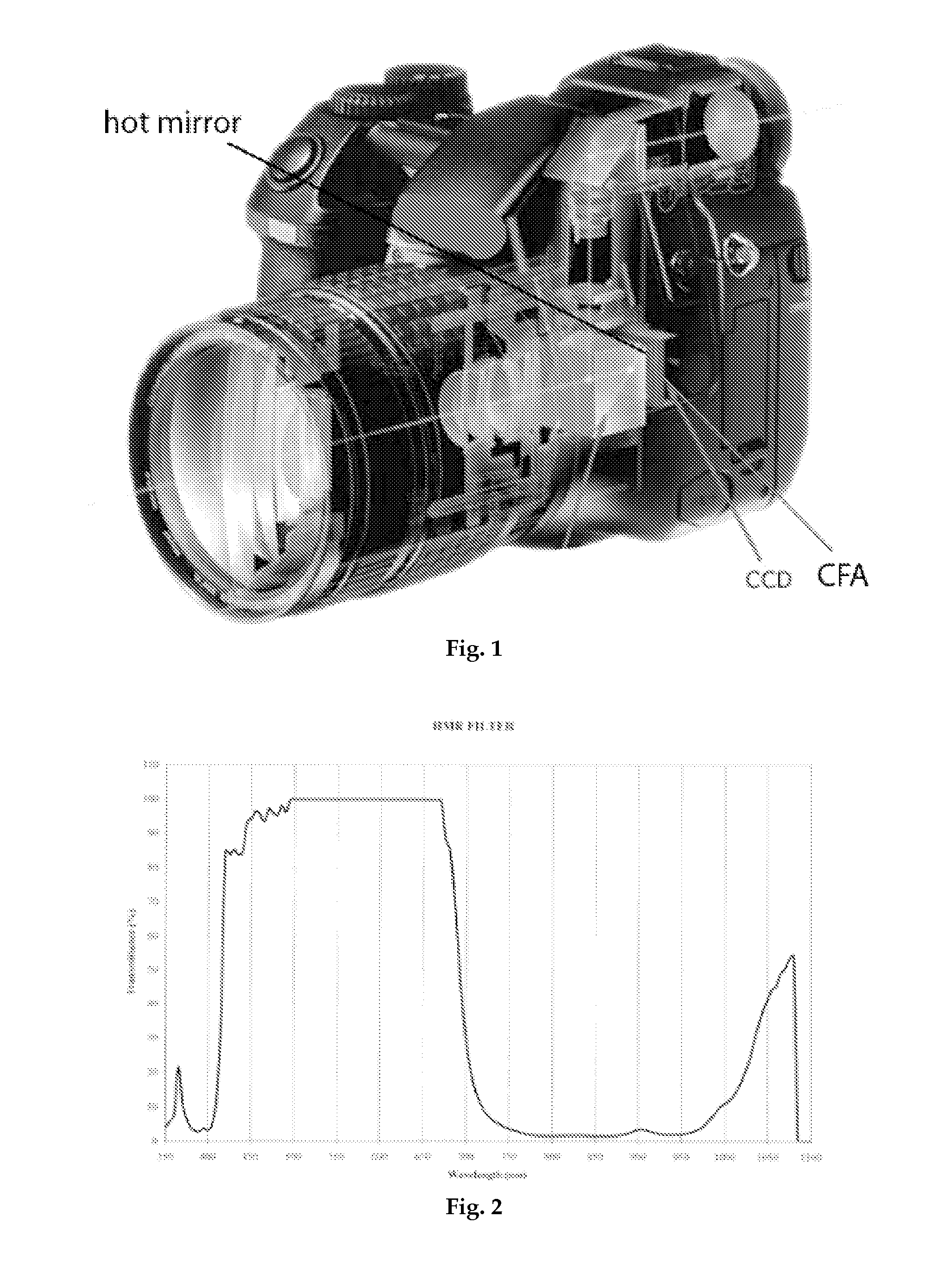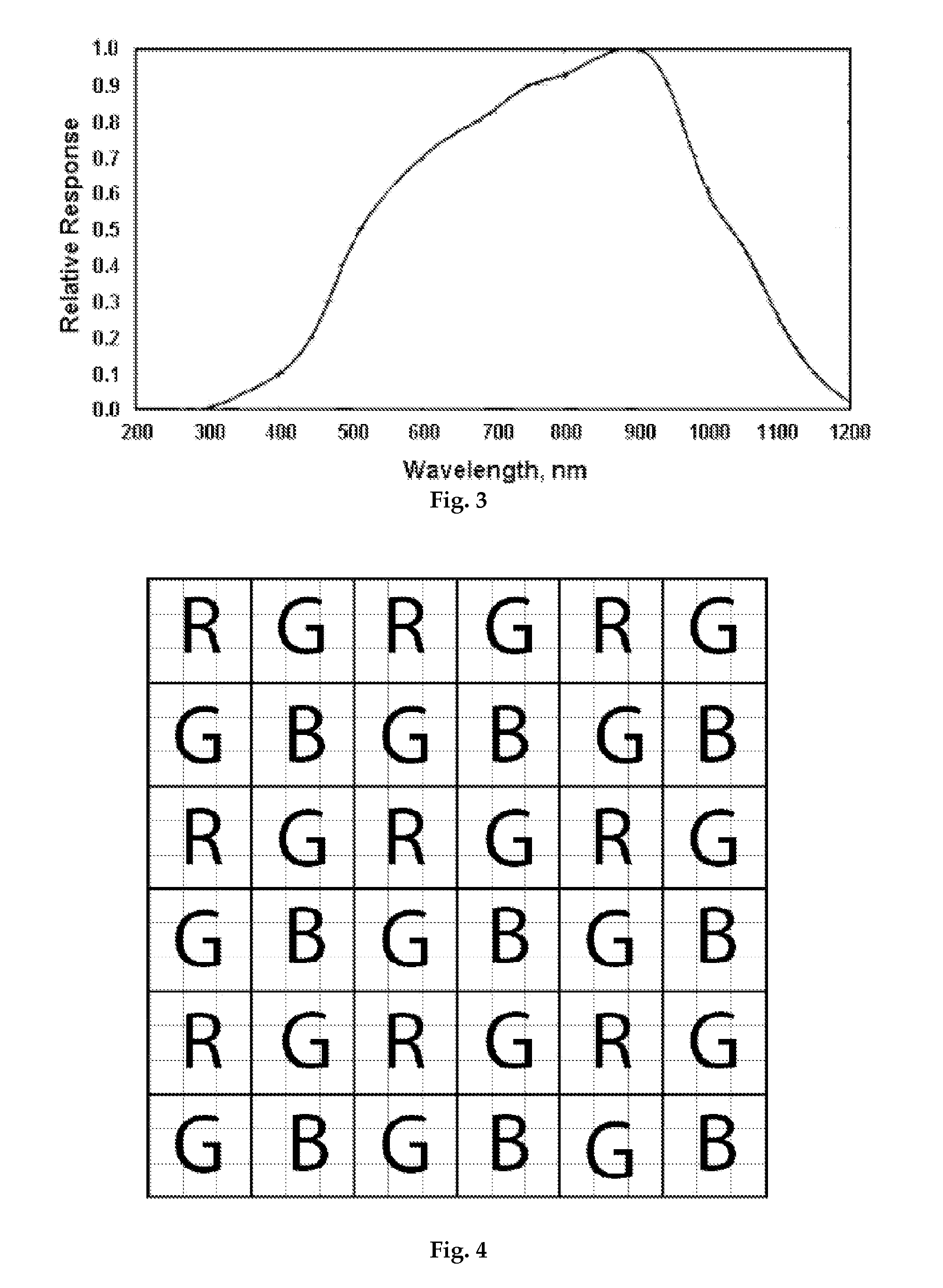Camera design for the simultaneous capture of near-infrared and visible images
a near-infrared and visible image technology, applied in the field of camera design for the simultaneous capture of near-infrared and visible images, can solve the problems of radiation outside the visible spectrum, “false” information in the colour channel, and significant loss of potentially valuable information
- Summary
- Abstract
- Description
- Claims
- Application Information
AI Technical Summary
Benefits of technology
Problems solved by technology
Method used
Image
Examples
Embodiment Construction
[0021]The colour filter array is an essential component of a classical digital camera (see FIG. 1). There are several other such designs, including some that do not use RGB filters or that use more than three. The Bayer Pattern being by far the most common CFA, it is the one we use as an example.
[0022]Indeed, the photosensitive material that composes a camera's sensor is, in essence, colour blind. This is only natural given that the sensor's purpose is to convert electromagnetic energy into electrical charge, this is done regardless of the incident light's wavelength, provided it is one the sensor is sensitive to. In order to evolve from a monochromatic (i.e., grey scale) image to a colour one, the preferred solution is to append an array of coloured filter in front of the sensor. This array is composed of a mosaic of coloured transparent material that let only a portion of the spectrum pass trough. The most commonly encountered CFA is the Bayer Pattern illustrated in FIG. 4. In thi...
PUM
 Login to View More
Login to View More Abstract
Description
Claims
Application Information
 Login to View More
Login to View More - R&D
- Intellectual Property
- Life Sciences
- Materials
- Tech Scout
- Unparalleled Data Quality
- Higher Quality Content
- 60% Fewer Hallucinations
Browse by: Latest US Patents, China's latest patents, Technical Efficacy Thesaurus, Application Domain, Technology Topic, Popular Technical Reports.
© 2025 PatSnap. All rights reserved.Legal|Privacy policy|Modern Slavery Act Transparency Statement|Sitemap|About US| Contact US: help@patsnap.com



